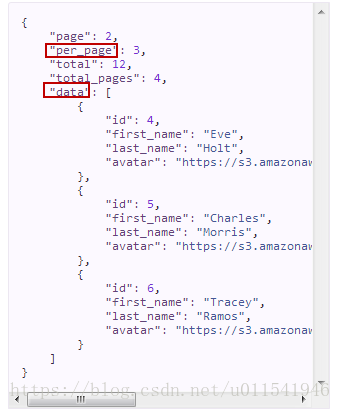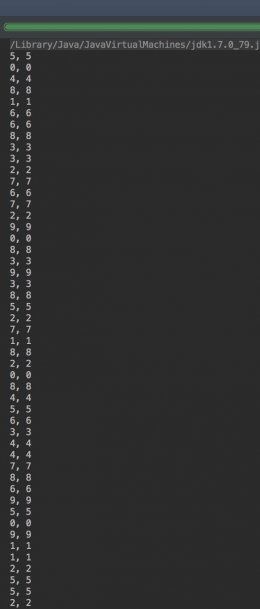本站收集了一篇java相关的编程文章,网友索宁夏根据主题投稿了本篇教程内容,涉及到java、接口、自动化测试框架、断言相关内容,已被956网友关注,内容中涉及的知识点可以在下方直接下载获取。
在上篇文章,我们介绍了Get方法的设计过程和测试结果,现在我们需要对前面代码进行重构和修改,本篇需要完成以下目标。
- 1)重构Get方法
- 2)如何进行JSON解析
- 3)使用TestNG方法进行测试断言
1.重构Get方法
在前面文章,说过,之前写的Get方法比较繁琐,不光写了如何进行Get请求,还写了获取http响应状态码和JSON转换。现在我们需要抽取出来,设计Get请求方法,就只干一件事情,那就是如何发送get请求,其他的不要管。
我们知道,请求之后会返回一个HTTP的响应对象,所以,我们把get方法的返回值类型改成了响应对象,并带上返回语句,重构代码之后,get方法代码如下。
package com.qa.restclient;
import java.io.IOException;
import org.apache.http.client.ClientProtocolException;
import org.apache.http.client.methods.CloseableHttpResponse;
import org.apache.http.client.methods.HttpGet;
import org.apache.http.impl.client.CloseableHttpClient;
import org.apache.http.impl.client.HttpClients;
public class RestClient {
//1. Get 请求方法
public CloseableHttpResponse get(String url) throwsClientProtocolException, IOException {
//创建一个可关闭的HttpClient对象
CloseableHttpClienthttpclient = HttpClients.createDefault();
//创建一个HttpGet的请求对象
HttpGethttpget = newHttpGet(url);
//执行请求,相当于postman上点击发送按钮,然后赋值给HttpResponse对象接收
CloseableHttpResponsehttpResponse = httpclient.execute(httpget);
return httpResponse;
}
}
由于我们不想在代码里写死例如像HTTP响应状态码200这样的硬编码,所以,这里我们在TestBase.java里把状态码给用常量写出来,方便每一个TestNG测试用例去调用去断言。
package com.qa.base;
import java.io.FileInputStream;
import java.io.FileNotFoundException;
import java.io.IOException;
import java.util.Properties;
public class TestBase {
public Properties prop;
public int RESPNSE_STATUS_CODE_200 = 200;
public int RESPNSE_STATUS_CODE_201 = 201;
public int RESPNSE_STATUS_CODE_404 = 404;
public int RESPNSE_STATUS_CODE_500 = 500;
//写一个构造函数
public TestBase() {
try{
prop= new Properties();
FileInputStreamfis = new FileInputStream(System.getProperty("user.dir")+
"/src/main/java/com/qa/config/config.properties");
prop.load(fis);
}catch (FileNotFoundException e) {
e.printStackTrace();
}catch (IOException e) {
e.printStackTrace();
}
}
}
现在我们的测试类代码修改之后如下。
package com.qa.tests;
import java.io.IOException;
importorg.apache.http.client.ClientProtocolException;
importorg.apache.http.client.methods.CloseableHttpResponse;
import org.testng.Assert;
import org.testng.annotations.BeforeClass;
import org.testng.annotations.Test;
import com.qa.base.TestBase;
import com.qa.restclient.RestClient;
public class GetApiTest extends TestBase{
TestBase testBase;
String host;
String url;
RestClient restClient;
CloseableHttpResponse closeableHttpResponse;
@BeforeClass
public void setUp() {
testBase = new TestBase();
host = prop.getProperty("HOST");
url = host + "/api/users";
}
@Test
public void getAPITest() throws ClientProtocolException, IOException {
restClient = new RestClient();
closeableHttpResponse= restClient.get(url);
//断言状态码是不是200
int statusCode = closeableHttpResponse.getStatusLine().getStatusCode();
Assert.assertEquals(statusCode,RESPNSE_STATUS_CODE_200, "response status code is not 200");
}
}
测试运行通过,没毛病。
2.写一个JSON解析的工具类
在上面部分,我们只是写了执行Get请求和状态码是否200的断言。接下来,我们需要写有一个JSON解析工具类,这样就方便我们去json内容的断言。
下面这个JSON数据截图

上面是一个标准的json的响应内容截图,第一个红圈”per_page”是一个json对象,我们可以根据”per_page”来找到对应值是3,而第二个红圈“data”是一个JSON数组,而不是对象,不能直接去拿到里面值,需要遍历数组。
下面,我们写一个JSON解析的工具方法类,如果是像第一个红圈的JSON对象,我们直接返回对应的值,如果是需要解析类似data数组里面的json对象的值,这里我们构造方法默认解析数组第一个元素的内容。
在src/main/java下新建一个包:com.qa.util,然后在新包下创建一个TestUtil.java类。
package com.qa.util;
import com.alibaba.fastjson.JSONArray;
import com.alibaba.fastjson.JSONObject;
public class TestUtil {
/**
*
* @param responseJson ,这个变量是拿到响应字符串通过json转换成json对象
* @param jpath,这个jpath指的是用户想要查询json对象的值的路径写法
* jpath写法举例:1) per_page 2)data[1]/first_name ,data是一个json数组,[1]表示索引
* /first_name 表示data数组下某一个元素下的json对象的名称为first_name
* @return,返回first_name这个json对象名称对应的值
*/
//1 json解析方法
public static String getValueByJPath(JSONObject responseJson, String jpath){
Objectobj = responseJson;
for(String s : jpath.split("/")) {
if(!s.isEmpty()) {
if(!(s.contains("[") || s.contains("]"))) {
obj = ((JSONObject) obj).get(s);
}else if(s.contains("[") || s.contains("]")) {
obj =((JSONArray)((JSONObject)obj).get(s.split("\\[")[0])).get(Integer.parseInt(s.split("\\[")[1].replaceAll("]", "")));
}
}
}
return obj.toString();
}
}
简单解释下上面的代码,主要是查询两种json对象的的值,第一种最简单的,这个json对象在整个json串的第一层,例如上面截图中的per_page,这个per_page就是通过jpath这个参数传入,返回的结果就是3. 第二种jpath的查询,例如我想查询data下第一个用户信息里面的first_name的值,这个时候jpath的写法就是data[0]/first_name,查询结果应该是Eve。
3.TestNG测试用例
下面,我们TestNG测试用例代码如下
package com.qa.tests;
import java.io.IOException;
import org.apache.http.client.ClientProtocolException;
import org.apache.http.client.methods.CloseableHttpResponse;
import org.apache.http.util.EntityUtils;
import org.testng.Assert;
import org.testng.annotations.BeforeClass;
import org.testng.annotations.Test;
import com.alibaba.fastjson.JSON;
import com.alibaba.fastjson.JSONObject;
import com.qa.base.TestBase;
import com.qa.restclient.RestClient;
import com.qa.util.TestUtil;
public class GetApiTest extends TestBase{
TestBase testBase;
String host;
String url;
RestClient restClient;
CloseableHttpResponse closeableHttpResponse;
@BeforeClass
public void setUp() {
testBase = new TestBase();
host = prop.getProperty("HOST");
url = host + "/api/users?page=2";
}
@Test
public void getAPITest() throws ClientProtocolException, IOException {
restClient = new RestClient();
closeableHttpResponse = restClient.get(url);
//断言状态码是不是200
int statusCode = closeableHttpResponse.getStatusLine().getStatusCode();
Assert.assertEquals(statusCode, RESPNSE_STATUS_CODE_200, "response status code is not 200");
//把响应内容存储在字符串对象
String responseString = EntityUtils.toString(closeableHttpResponse.getEntity(),"UTF-8");
//创建Json对象,把上面字符串序列化成Json对象
JSONObject responseJson = JSON.parseObject(responseString);
//System.out.println("respon json from API-->" + responseJson);
//json内容解析
String s = TestUtil.getValueByJPath(responseJson,"data[0]/first_name");
System.out.println(s);
}
}
运行测试结果:
[RemoteTestNG] detected TestNGversion 6.14.3 Eve PASSED: getAPITest
你还可以多写几个jpath来测试这个json解析工具类。
String s = TestUtil.getValueByJPath(responseJson,"data[1]/id"); String s = TestUtil.getValueByJPath(responseJson,"per_page");
4.TestNG自带的测试断言方法
这里简单提一下TestNG的断言方法,我们一般测试都需要写断言的代码,否则这样的单元测试代码就没有意义。下面,我在statusCode和json解析的first_name进行断言。
package com.qa.tests;
import java.io.IOException;
import org.apache.http.client.ClientProtocolException;
import org.apache.http.client.methods.CloseableHttpResponse;
import org.apache.http.util.EntityUtils;
import org.testng.Assert;
import org.testng.annotations.BeforeClass;
import org.testng.annotations.Test;
import com.alibaba.fastjson.JSON;
import com.alibaba.fastjson.JSONObject;
import com.qa.base.TestBase;
import com.qa.restclient.RestClient;
import com.qa.util.TestUtil;
public class GetApiTest extends TestBase{
TestBase testBase;
String host;
String url;
RestClient restClient;
CloseableHttpResponse closeableHttpResponse;
@BeforeClass
public void setUp() {
testBase = new TestBase();
host = prop.getProperty("HOST");
url = host + "/api/users?page=2";
}
@Test
public void getAPITest() throws ClientProtocolException, IOException {
restClient = new RestClient();
closeableHttpResponse = restClient.get(url);
//断言状态码是不是200
int statusCode = closeableHttpResponse.getStatusLine().getStatusCode();
Assert.assertEquals(statusCode, RESPNSE_STATUS_CODE_200, "response status code is not 200");
//把响应内容存储在字符串对象
String responseString = EntityUtils.toString(closeableHttpResponse.getEntity(),"UTF-8");
//创建Json对象,把上面字符串序列化成Json对象
JSONObject responseJson = JSON.parseObject(responseString);
//System.out.println("respon json from API-->" + responseJson);
//json内容解析
String s = TestUtil.getValueByJPath(responseJson,"data[0]/first_name");
System.out.println(s);
Assert.assertEquals(s, "Eve","first name is not Eve");
}
}
经常使用的测试断言:
Assert.assertEquals(“现实结果”, "期待结果","断言失败时候打印日志消息");
以上就是本文的全部内容,希望对大家的学习有所帮助,也希望大家多多支持码农之家。













